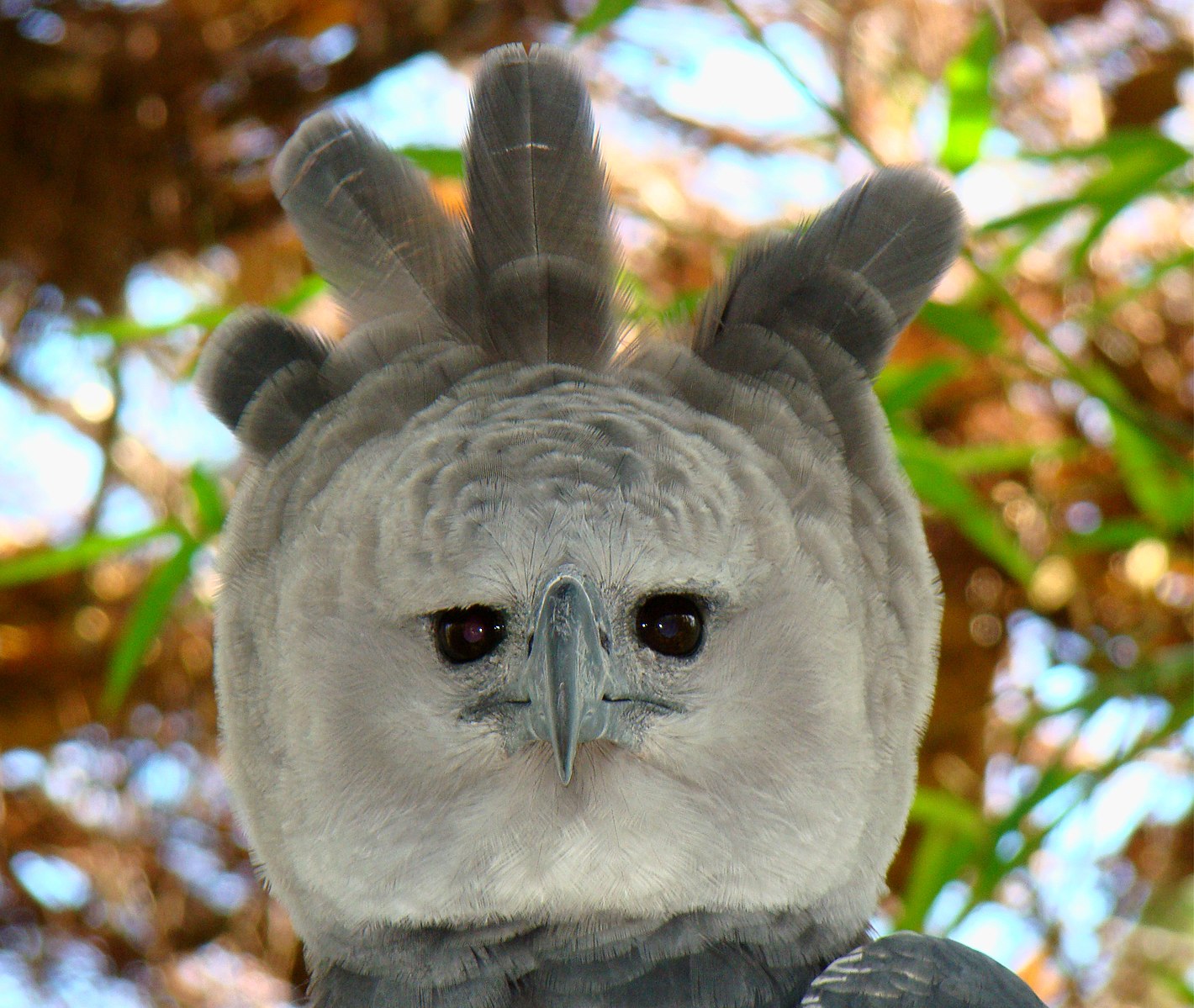Harpy Eagles, among the most powerful raptors in the world, are not known to exist in the United States. These magnificent birds of prey primarily inhabit tropical lowland rainforests in Central and South America, with the largest known breeding population found in Panama, close to the border with Colombia. Due to significant habitat loss caused by deforestation, Harpy Eagles have vanished from many parts of their former range and are now nearly extinct in Central America.
Harpy Eagles: Apex Predators of the Rainforest
Harpy Eagles are known for their distinctive features, such as a facial disk that assists in directing sounds to their ears, enabling them to hunt effectively under the dim rainforest canopy. With a wingspan reaching up to 6.5 feet (2 meters), these diurnal birds of prey feed on a variety of tree-dwelling mammals, large birds, and reptiles. Their legs are as thick as a person’s arm, and their talons can measure up to four inches long, resembling the claws of a grizzly bear.
Harpy Eagles in North American Zoos
 Image source: Harpy Eagle by Bjørn Christian Tørrissen
Image source: Harpy Eagle by Bjørn Christian Tørrissen
Despite their rarity, Harpy Eagles play a crucial role in the rainforest ecosystem as apex predators, maintaining a balance in the population of various species. However, their conservation is a significant challenge, as their habitat has been severely reduced due to deforestation. Consequently, Harpy Eagles are not commonly found in North American zoos, with only eight zoos in the United States and Canada known to house this species.
Importance of Harpy Eagle Conservation
The conservation of Harpy Eagles is essential for preserving biodiversity and ensuring the survival of numerous other species that share their habitat. As apex predators, Harpy Eagles play a vital role in regulating the populations of their prey, which in turn affects the overall health and balance of the rainforest ecosystem. By protecting Harpy Eagles and their habitat, we can help safeguard the delicate balance of the tropical rainforest and the countless species that depend on it.
Threats to Harpy Eagle Populations
The primary threat to Harpy Eagle populations is the ongoing deforestation of their tropical rainforest habitat. As their habitat is cleared for agriculture, logging, and urban development, Harpy Eagles are forced to adapt to smaller and more fragmented forest areas, making it increasingly difficult for them to thrive. Additionally, hunting and poaching have also contributed to the decline of Harpy Eagle populations in some regions.
Conservation Efforts for Harpy Eagles
To address the threats facing Harpy Eagles, various conservation organizations and government agencies have implemented a range of initiatives. These efforts include:
- Habitat Protection: Establishing protected areas and national parks to safeguard the remaining Harpy Eagle habitat.
- Reforestation: Planting trees and restoring degraded forest areas to expand the available habitat for Harpy Eagles and their prey.
- Community Engagement: Collaborating with local communities to raise awareness about the importance of Harpy Eagle conservation and promote sustainable land-use practices.
- Research and Monitoring: Conducting scientific studies to better understand Harpy Eagle biology, behavior, and population dynamics, which can inform conservation strategies.
- Captive Breeding and Release: Establishing captive breeding programs to supplement wild populations and reintroduce Harpy Eagles to areas where they have been extirpated.
Conclusion
While Harpy Eagles are not found in the United States, their conservation is crucial for maintaining the delicate balance of tropical rainforest ecosystems in Central and South America. By supporting and participating in conservation efforts, we can help ensure the survival of these magnificent birds of prey and the countless other species that depend on the same habitats. Through a collaborative approach involving governments, conservation organizations, and local communities, we can work towards a future where Harpy Eagles continue to thrive in their natural environments.
References:
- Harpy Eagle | The Peregrine Fund. Retrieved from https://peregrinefund.org/explore-raptors-species/eagles/harpy-eagle
- Harpy Eagle – San Diego Zoo Animals & Plants. Retrieved from https://animals.sandiegozoo.org/animals/harpy-eagle
- Harpy eagle – Wikipedia. Retrieved from https://en.wikipedia.org/wiki/Harpy_eagle
- Harpy Eagles in North American Zoos – ZooChat. Retrieved from https://www.zoochat.com/community/threads/harpy-eagles-in-north-american-zoos.68382/
- Harpy Eagle – American Bird Conservancy. Retrieved from https://abcbirds.org/bird/harpy-eagle/.



